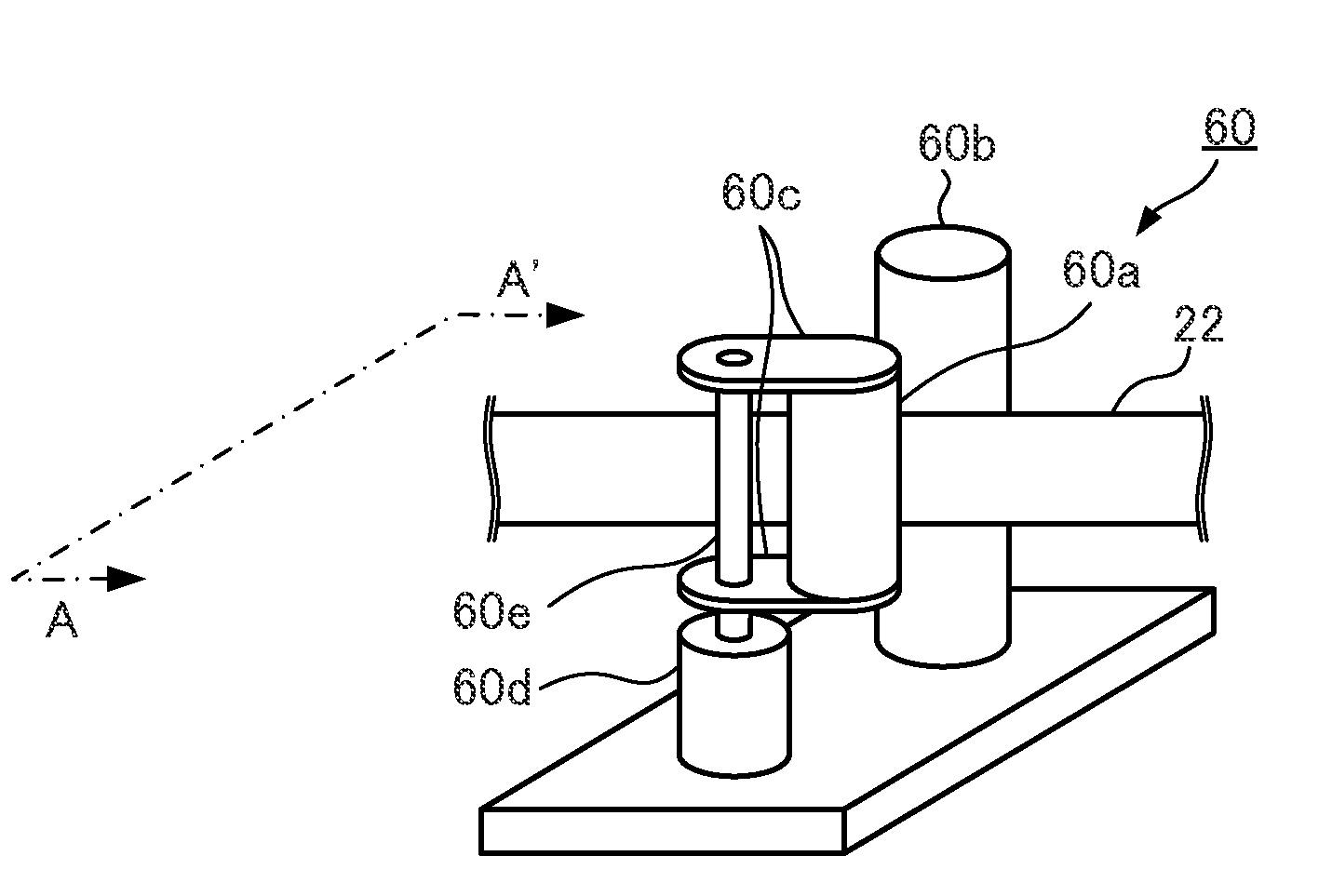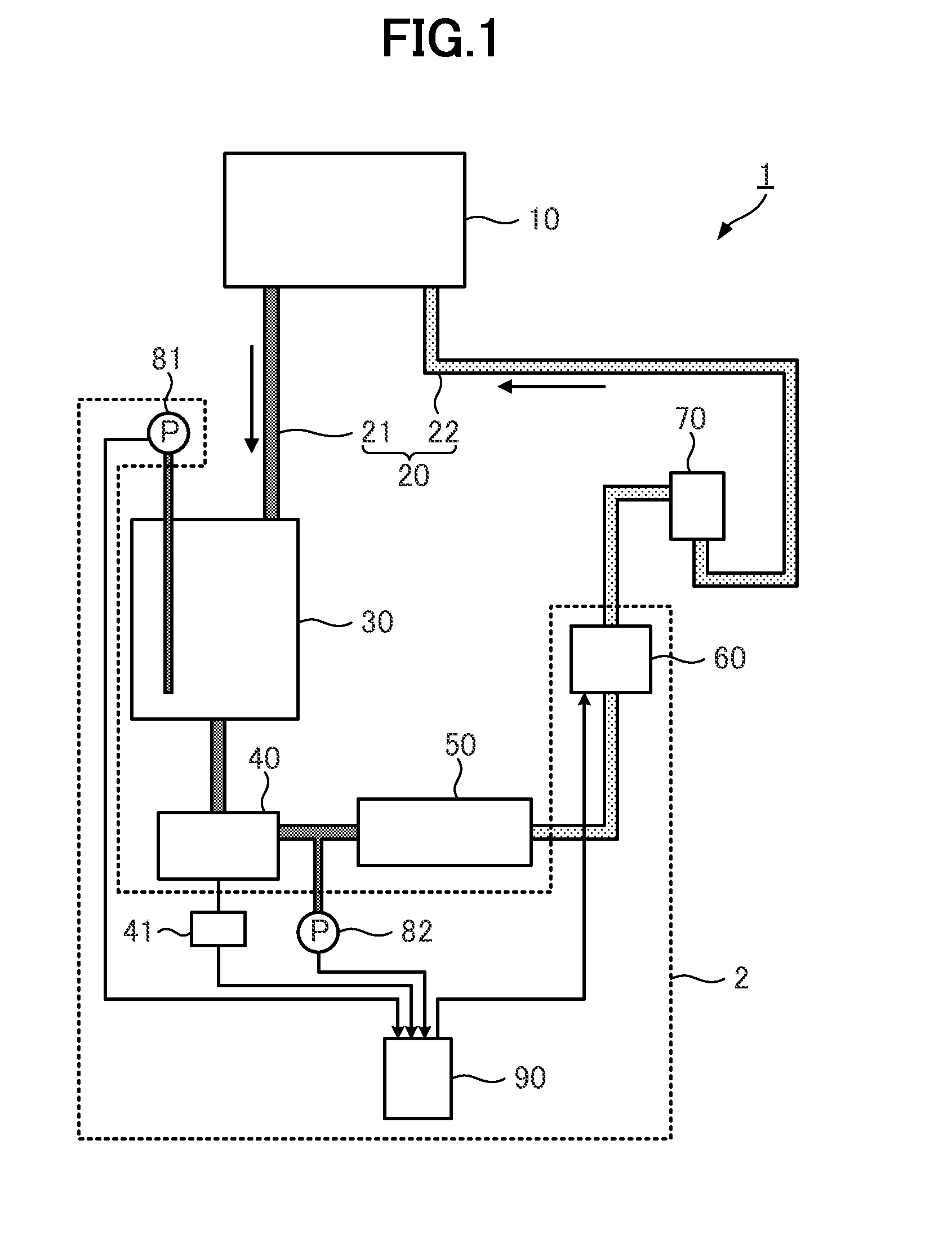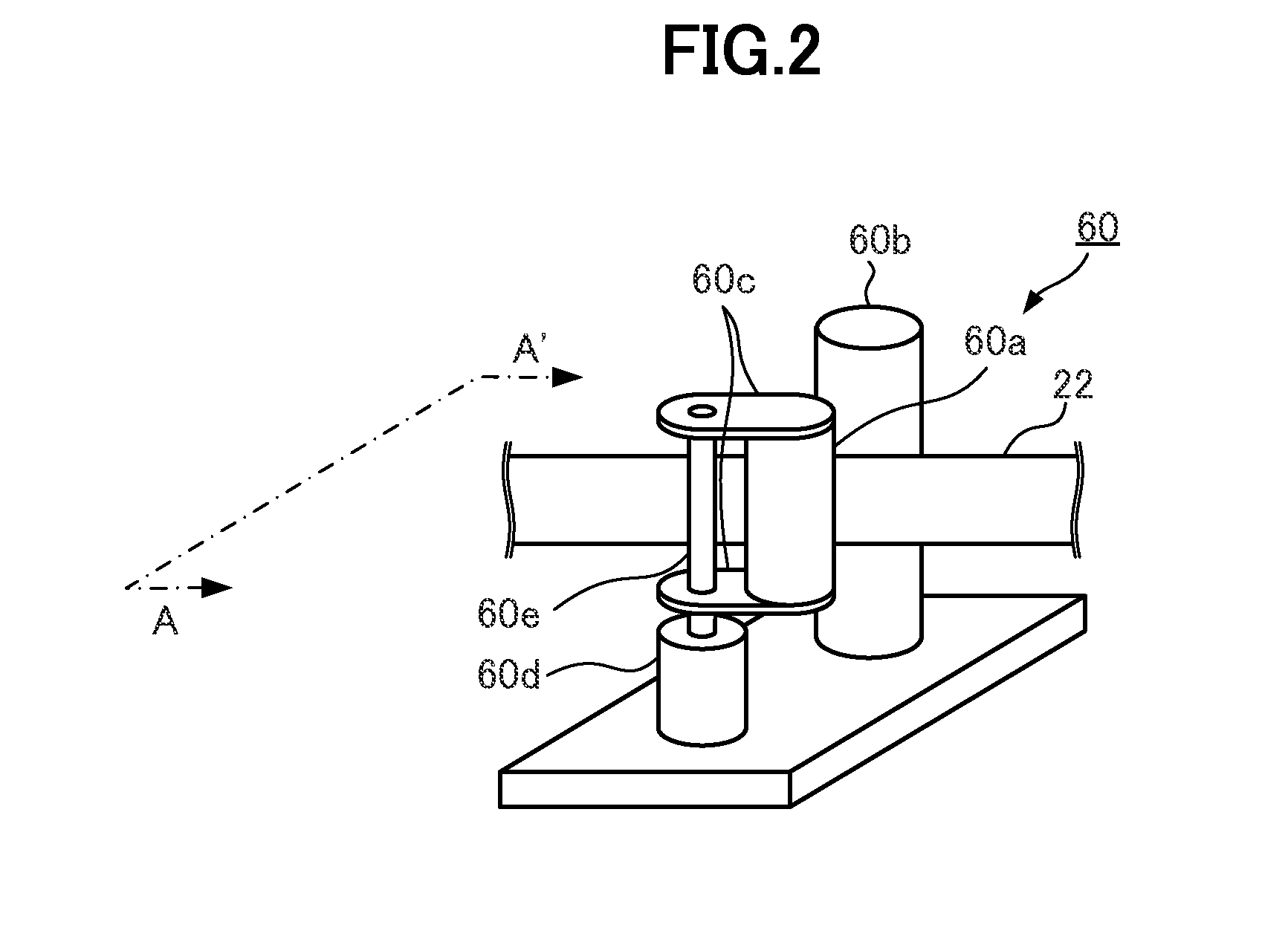Blood Feeding Flow Rate-Controlling Device and Extracorporeal Circulation Device
a flow rate control and flow rate technology, applied in the direction of suction devices, circulatory assistance devices, other medical devices, etc., can solve the problems of increased blood supply flow rate, and increased risk of foreign material entrainment, so as to achieve high-responsive control and increase safety
- Summary
- Abstract
- Description
- Claims
- Application Information
AI Technical Summary
Benefits of technology
Problems solved by technology
Method used
Image
Examples
example 1
[0089]The usefulness of controlling an opening of an occluder was examined as a method for controlling a blood supply flow rate in an extracorporeal circuit using a centrifugal pump.
[0090]An extracorporeal circuit was constructed using a commercially available centrifugal pump and arterial line occluder, and flow rate response characteristics to variations of the occluder opening were studied. HAS-RE (from Senko Medical Instrument Mfg. Co. Ltd.) was used as an occluder.
[0091]The rotational frequency of the centrifugal pump was kept constant (2000 rpm), and then the opening of the occluder was changed stepwise 0% to 100% at 10 sec intervals to change the flow rate.
[0092]In addition, as a comparative example, the flow rate response characteristics were studied by not controlling the opening of the occluder but changing the target value of the rotational frequency of the centrifugal pump. In the comparative example, the target value of the rotational frequency of the centrifugal pump w...
example 2
[0097]Subsequently, whether a blood supply flow rate can be controlled to be approximate to a target blood supply flow rate was examined by changing an arterial line pressure using a training device for extracorporeal circulation (Japanese Patent Nos. 3774769 and 4284418) developed by the inventors of the present application.
[0098]Initially, a system was prototyped that enabled estimation parameters of an inlet pressure, an outlet pressure, and a rotational frequency of a centrifugal pump to be acquired in real time by an 8-bit microcomputer, an estimated blood flow rate to be calculated by the estimated blood flow rate equation (equation 1) and then the resulting value to be displayed, and an occluder to be controlled. FIG. 11 shows a block diagram of the prototype system.
[0099]In addition, a flow rate regulator (occluder) having the structure shown in FIGS. 2 and 3 was prototyped. Then, the prototype system and the occluder were connected to the training device for extracorporeal ...
PUM
 Login to View More
Login to View More Abstract
Description
Claims
Application Information
 Login to View More
Login to View More - R&D Engineer
- R&D Manager
- IP Professional
- Industry Leading Data Capabilities
- Powerful AI technology
- Patent DNA Extraction
Browse by: Latest US Patents, China's latest patents, Technical Efficacy Thesaurus, Application Domain, Technology Topic, Popular Technical Reports.
© 2024 PatSnap. All rights reserved.Legal|Privacy policy|Modern Slavery Act Transparency Statement|Sitemap|About US| Contact US: help@patsnap.com










